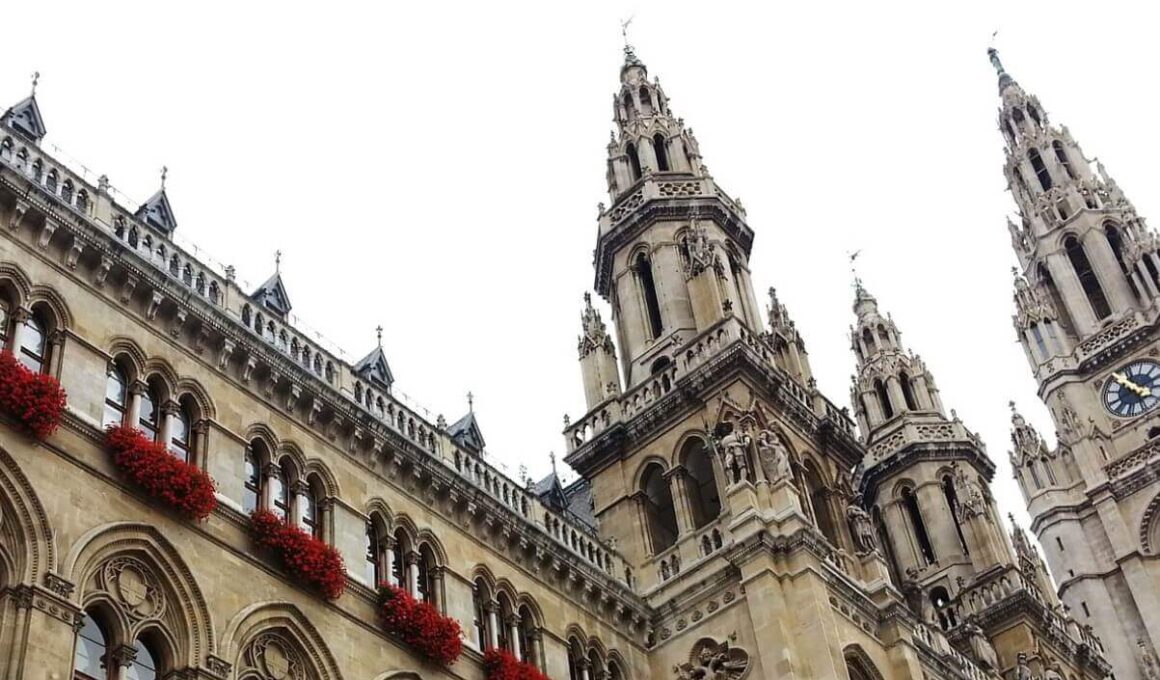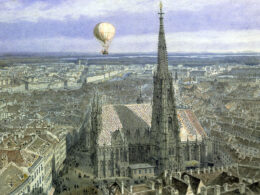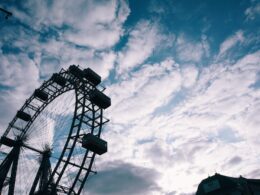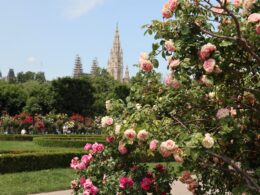Table of Contents
- Small Yet Must-Visit Vienna Attractions
- Top Vienna Attractions Landmarks
- Amazing Vienna Attractions for Art Lovers
- Fiaker Horses – Perfect Vienna Attractions for Tourists
- Hidden Vienna Attractions – Republic of Kugelmugel
- The Oldest Preserved House in Vienna
- The most popular attraction Kaisergruft
- FAQs about attractions in Vienna
- Related articles
If you’re planning a trip to this wonderful city, here are Vienna attractions you should visit. After going through this post, you’re going to easily create list of top 10 tourist attractions Vienna Austria you want to visit in following days.
Small Yet Must-Visit Vienna Attractions
The city may have quite a number of huge structures including Vienna top attractions you don’t want to miss:
- churches
- castles
- Vienna opera house
- Vienna hotels
- tiny spaces around the city worth visiting
These places may have limited space but they can create beautiful memories for people who wish to spend quality and quiet times with their loved ones.
Famous Vienna Attractions – The American Bar

Also called Loos Bar, this American Bar was designed by Viennese architect Adolf Loos. Loos is among the architects of Vienna focusing on modernist architecture. His works mostly feature small-scale interiors including the Loos Bar established in 1908.
Interestingly, the bar only measures 13 feet by 20 feet but each detail was carefully designed using the specific properties of every material.
Delicious Vienna Attractions – Restaurant Rudi’s Beisl
This is a tiny and old fashioned restaurant that features the classics. Here, guests can order the pan-fried steak called zwiebelrostbraten. This dish is topped with lots of fried onions.
Those who love the classic Viennese cuisine without any modernizations should not miss going to this place.
Das Tyrol Hotel
This is a friendly and affordable hotel that’s often fully booked. Originally built some 175 years ago as a convent, the building was converted into a small boutique hotel in 1999. This was after Helena von Ramsbacher of the Austrian Parliament bought the property and had it restored.
Despite being called a small hotel, the establishment features high ceilings, contemporary furnishings, a collection of contemporary art and a winding central staircase.
Top Vienna Attractions Landmarks
Below are some of our favorite categories of activities, tours, and things to do in Vienna.
Imperial Treasury
The Imperial Treasury or Schatzkammer is where some of the most precious and ornate relics of the Habsburg empire are displayed. Visitors can view here the famous Austrian imperial crown, the world’s biggest cur emerald and other treasures including jewels and fabrics.
Vienna Secession
The Secession museum building boasts of a golden dome that dominates the Vienna skyline. This museum was constructued to house artmovements of Vienna in an effort to unite the different art forms including architecture. The Secession is considered the oldest independent gallery in the world dedicated to contemporary art.
Votive Church
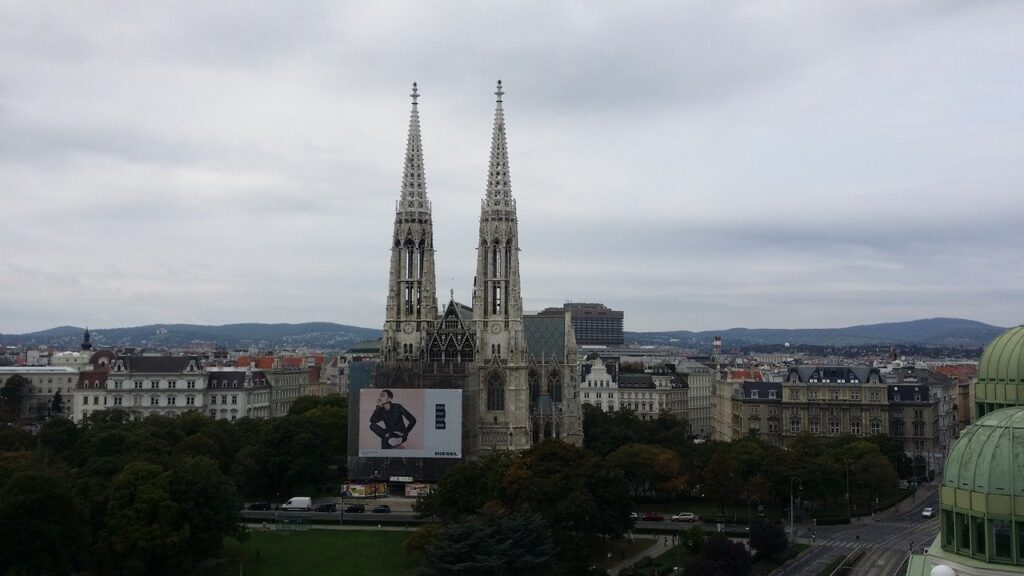
The Votive Vienna Church or Votivkirche in Vienna is a gothic church that boasts of stunning stained glass. Situated in RingStraBe, this religious structure was commissioned by Archduke Ferdinand Maximilian after the attempted assassination of his brother Emperor Franz Joseph. It was his way of giving thanks for saving the life of Emperor brother.
Imperial Crypt
The Imperial Crypt or Kaisergruft is where the preserved internal organs of the Hapsburg royal family members can be found.
Buried here are:
- the 12 emperors,
- 18 empresses and
- 113 other members of the royal family.
A few blocks away is the heart room where 54 urns are kept.
Heldenplatz
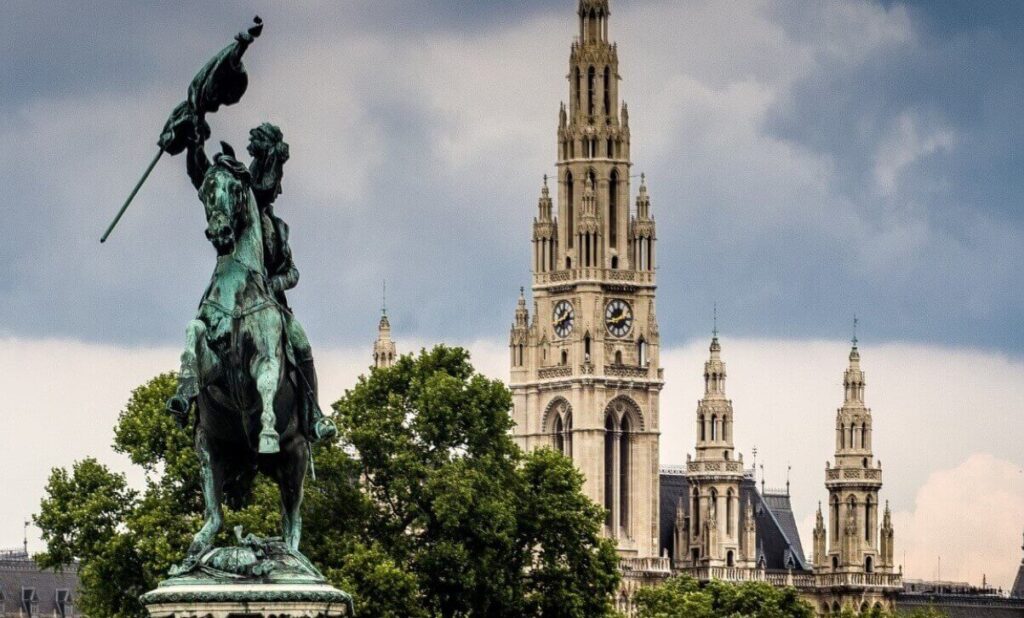
Heldenplatz is considered among the last expansions to the Hofburg Palace by the Hapsburg family. A majestic structure, this neoclassical style building is a testament to the Hapsburg’s desire to be known as a powerful empire comparable to the Greek gods.
Outside the building stands the statue of Archduke Charles II.
Amazing Vienna Attractions for Art Lovers
Art lovers from around the world have flocked to Vienna, Austria, for centuries. Vienna is ranked along with Paris and Rome as one of Europe’s most important art centers.
There are myriad museums and art galleries in Vienna which offer a wide range of styles and experiences.
The Albertina Graphic Arts Collection
The Albertina Graphic Arts Collection is located on Albertinaplatz and is a Mecca for graphic artists from around the globe. This museum boasts the world’s largest collection of graphic art with over 60,000 pieces in its collection. Most notable, the Albertina is home to the seminal work “The Rabbit” created by Albrecht Dürer in the 16th century.
MOYA
Moya, or the Museum of Young Art, is a repository of modern pieces with include paintings, sculptures, and various other multimedia displays all created during the current millennium. The Museum of Young Art is located right on the famous Ringstrasse.
MUMOK Museum Moderner Kunst & Museumsquartier
The museum of modern art is dedicated to art of the 20th and 21st centuries, with collections from classical modernism, nouveau réalisme, fluxus, pop-art and Viennese actionism movements.
As well as being informative, guided tours challenge visitors to think about and criticize the art. Housed in the big, grey lump in the courtyard of the fabulous Museumsquartier.
Belvedere Palace

The Belvedere is a historical palace located in the 3rd District of Vienna, Austria. The palace itself offers a wonderful destination for architecture lovers, especially those enjoying classic buildings in the Rococo style.
Within the Belvedere Palace resides two museums focusing on the best art to emerge from Austria in the 18th and 19th centuries.
The Sigmund Freud Museum
If you’re museum lover, this is one of the best Vienna attractions for you. This museum provides unique insight into one of the most well known people to emerge from Vienna.
The Sigmund Freud Museum contains the great thinker’s collection of art and furniture along with other pieces which paint a vivid picture of Dr. Freud’s life in Vienna. Psychiatry buffs can also attend lectures given on site by renowned followers of Freud’s teachings.
Museum of Fine Arts- Kunsthistorisches Museum
The Museum of Fine Arts in Vienna dates back to the time of the US Civil War. This museum is a must stop for all art lovers visiting Vienna, Austria.
It features works from history’s most famous artists including Rembrandt, Titian, Rubens and Raphael. Read more about the Museum of Fine Arts in Vienna.
Fiaker Horses – Perfect Vienna Attractions for Tourists
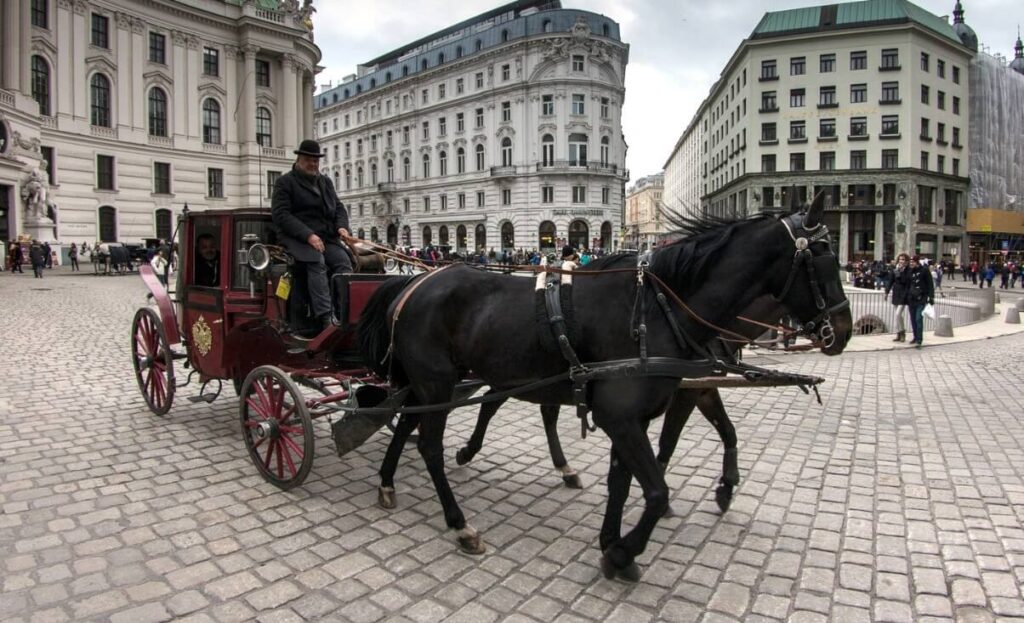
The fiakers are wonderful Vienna tourist attractions. Their name came from the French which then referred to the carriage stand in the Rue de Saint Fiacre of Paris. They were originally called Janschky coaches but were renamed to fiakers in 1720.
Horses are strong and can stand the heat during summer just like the fiakers of the Austrian capital. And if you are visiting Vienna, it’s a must to experience riding in these traditional horse-drawn carriages while touring the city.
In the Austrian capital, the fiaker horses are popularly used in carriages and for this summer, they have been working hard sometimes without even taking a day off. Drivers of these horse-drawn carriages said the horses are doing well despite the high temperatures adding that no health issues were found during their full check up with a veterinarian last year.
The fiaker drivers are not complaining as well saying they need to work hard to earn a living as the Vienna city government only allows them to do so during tourist season. Their normal working hours start at 9 a.m. and end until 11 p.m.
Back in 1860 until 1900, there were more than 1,000 fiakers in Vienna.
Today, they are still available and can be found in fiakers stands in:
- Stephansplatz
- Heldenplatz
- Albertinaplatz
- Petersplatz and
- Burgtheater
Visitors can choose between the short tour which takes 20 minutes and costs 55 Euro and the long tour which takes 40 minutes and costs 80 Euro.
Tip for romantics
For men planning to bring their partners on a romantic ride on a fiaker, make sure to request the driver for a porcelain ride.
This refers to a more steady and calmer drive than usual just like in the olden days when the coaches were used to transport precious porcelain safely without causing any damage to them during the entire journey.
Hidden Vienna Attractions – Republic of Kugelmugel
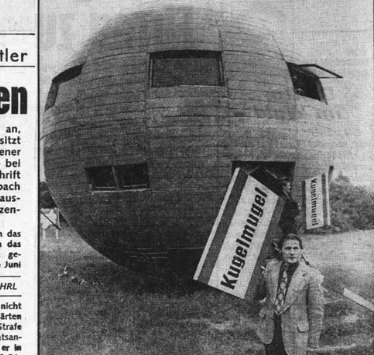
One of the lesser known and maybe even hidden Vienna attractions that tourists should find time to visit is the Republic of Kugelmugel. Situated in Vienna Prater, this spherical house is a republic of its own.
This house and republic got its name from German terms kugel which means sphere and mugel which is an Austrian German expression for bump or mogul.
The man behind this roundhouse design is Austrian artist Edwin Lipburger who built the house in the 1970s. His unique design was based on the principle that spheres are more natural and more liveable spaces compared to a square one.
The artist severed his ties with Austria in 1984 after facing difficulties regarding building permits. He eventually built his unique house on a hillside in Lower Austria in 1985 to avoid regulations. There, he declared himself as the ruler of imaginary civilians of his so-called micronation.
Due to his disappointment, Lipburger was said to have refused paying taxes to the Austrian government and even printed his own stamps. Unfortunately, that move led him to prison. The artist was later released from jail owing to a pardon granted by the Austrian president.
The ball-shaped house was eventually moved to the Prater park and enclosed with barbed wire fence. It uses the address Anti-Fascism Square, District 2.
The Oldest Preserved House in Vienna

When it comes to houses or residential properties, the oldest that still stands in the Austrian capital is the Heumuhle auf der Wieden or Haymill located in the fourth district. Check out Vienna Districts here.
It is a small house considered the oldest to be preserved in the city. Specifically, it is in a courtyard situated at the end of Grungasse.
Originally, the haymill was part of a hospital named Heiligengeistspital or what was known as the Hospital of the Holy Spirit. Unfortunately, the building was burned down in 1528.
By 1533, it was renovated and turned over by Emperor Ferdinand I to the Diocese of Vienna. This residential structure was first mentioned in a document dating back to 1326. It was used as a mill and bakery until 1856.
It was in 2004 when the Bundesdenkmalant which takes charge of preserving historic buildings conducted a study on the Haymill. The institution looked into the building’s history and recommended ways on how to preserve it. By 2008, the house was renovated at a cost of nearly a million Euros.
The Haymill today is used by offices. It’s considered as a Vienna landmarks attractions. Nearby attractions include the Naschmarkt, the Karlsplatz, Palais Favoriate and the Paulanerkirche.
The most popular attraction Kaisergruft
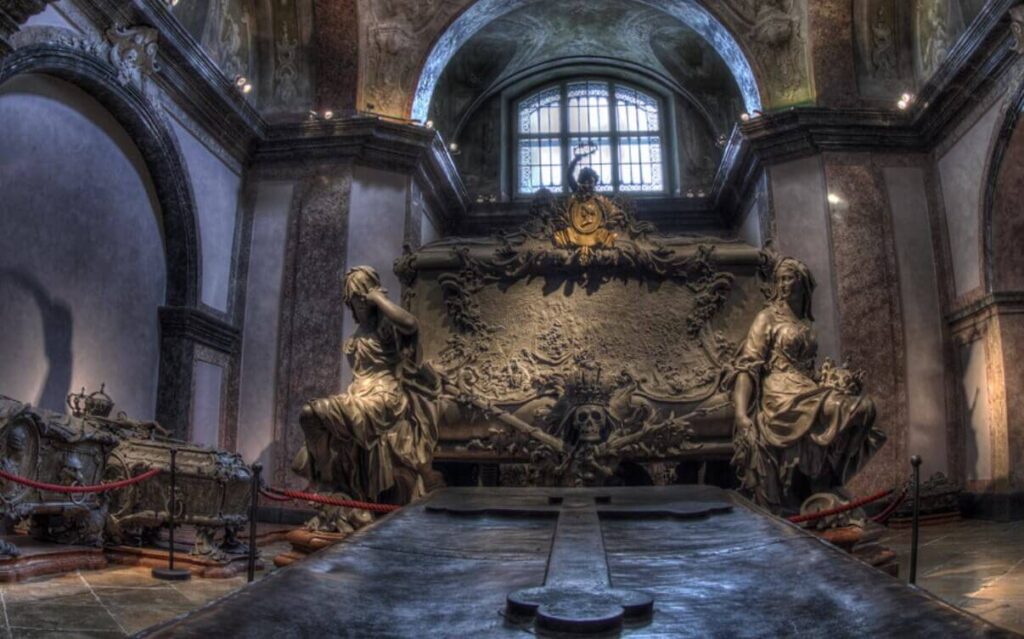
The Kaisergruft, or Kapuzinergruft (translated as the “Capuchins’ Tomb”) is one of the most popular, if not eerily unique attractions in the capital city of Austria.
It is called such because it was built below the monastery of the Order of the Capuchins in 1618 as part of the last will provided by Empress Anna of Tyrol who wanted a burial crypt for her and her husband, Emperor Matthias.
Although construction started in 1622, it was ten years later when the sarcophagi carrying the remains of Emperor Matthias and Empress Anna were laid to rest inside the crypt in what will be known as the “Founder’s Vault.”
The crypt now houses the graves of about 142 members of the Habsburg dynasty that includes 12 emperors and 18 empresses. There are about 107 sarcophagi that are visible while some are walled up along with five urns that contain the hearts of some of the royal family such as the Empresses Claudia Felicitas and Amalie.
During that period, it was a custom to bury the body, heart and intestines of the nobility separately. There are ten vaults that can be found in this subterranean crypt, as well as a chapel. A new vault was built in 1960 to provide more space for future entombments of the royalty.
The tombs themselves are remarkable to behold, ranging from the puritan to rococo and with various sculptures and engraving that befit the person buried inside. One example would be the tomb of Emperor Karl VI which was designed with a death’s head wearing a crown of the four realms that he ruled over.
FAQs about attractions in Vienna
How attractive is train ride from Venice to Vienna?
In these 9 hours you’re going to enjoy beautiful countryside. If you like to relax while having amazing view and avoid flights this is perfect choice for you.
What is a walkable tourist attraction in Vienna?
The best option is to visit Vienna Secession museum, The Kaisergruft or historical palace Belevedere.
What should you not miss in Vienna?
If you’re planning romantic trip to Vienna do not miss fiaker ride. And if you are art lovers do not miss palace Belevedere.
What can you do in Vienna for cheap?
Visiting Votive church and museums might be cheap way to get insight into the soul and the history of the Vienna.


